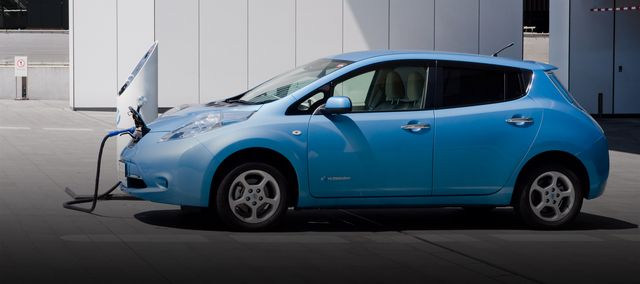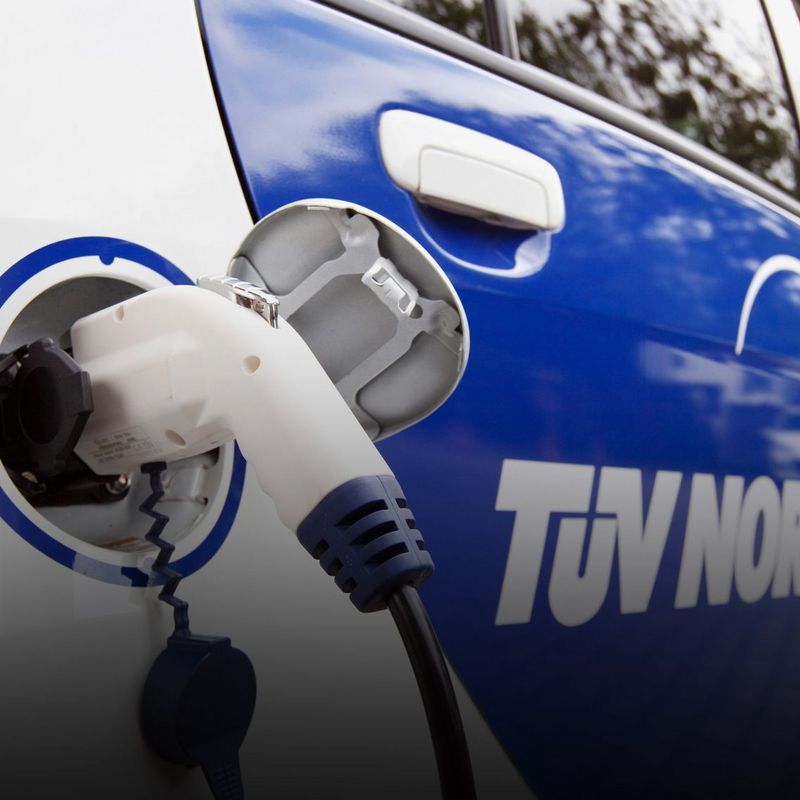14 March 2018
In 2017, 54,492 drivers in Germany took the plunge and opted for an electric car. That represents an increase of 117% in just one year. And yet, many people are still wary of making the leap: Common concerns relate to range, charging infrastructure and purchase price. #explore asked Christian Förster, an electro-mobility expert at TÜV NORD, what you need to look out for when buying an electric car.
Tip 1: If you're going to go electric, do it properly
If carbon emissions are going to be effectively reduced, as many kilometres fuelled by internal combustion as possible need to be replaced by electric kilometres. Plug-in hybrids - that is to say, hybrid vehicles which can be plugged in at home to charge - might make a degree of sense for taxis or courier services, but their low range means that they are on the whole, if anything, counter-productive. If they are to achieve acceptable ranges in urban traffic, they should be in possession of at least 5 to 8 kWh of battery storage per tonne of vehicle weight.
Tip 2: Making sure you get there: a rule of thumb for range
How far will I get with which electric car? This is the question that exercises most potential buyers. So here's a simple rule of thumb to help you stay on the safe side when you buy one: in winter in our latitudes, a compact car consumes about 20 kWh per hundred kilometres. If the battery capacity of smaller electric cars such as the VW eUP or the Smart is less than 20 kWh, you can instead reckon with about half of the stated range (according to NEDC). This is a worst-case scenario, but at least it means you're always guaranteed to get where you're going.
Tip 3: Homeowners enjoy home advantage when it comes to charging
In the future, fast charging stations on motorways will guarantee mobility over long distances and, in conurbations, will serve all those people who do not have their own charging point, rather like a classic petrol station. Until that happens, however, being able to charge up your car at home is a clear advantage if you're looking to get involved in electro-mobility conveniently and cheaply. And if you also have access to a charging station provided by your employer, being set up at home with a charging point will also increase your charging options after you leave work.
Tip 4: It all depends on the charging capacity of the in-car charger
Unlike the public charging infrastructure with its very expensive fast-charging stations (known as CTS in the European standard or CHAdeMO according to the Asian standard), affordable charging points for domestic use work with alternating current. If your domestic alternating current is to be transformed into direct current for the battery, the vehicle must be fitted with an in-car charger. The charging performance of present-day models ranges between 3.6 kW and 20 kW. So, if you want to charge the 20 kWh battery of your vehicle to get about 50 km worth of range, using a 3.6 kW charger will take you about three and half hours. With a 22 kW charger, this will take no more than half an hour. It's for this reason that models with a 3.6 kW charger are basically suitable for commuting with the odd visit to the shops thrown in. It's possible to order these vehicles with quick-charging technology as an optional extra. But then I need a quick-charging station close to where I live and can't conveniently plug my car in at home. If you want to boost your mobility to the max after work, an 11 to 22 kW in-car charger in your electric vehicle and a wall-mounted charger on your own private parking space with 11 to 22 kW and a Type 2 connector is currently your best bet.
Tip 5: A high charging capacity offers benefits with smaller batteries
Particularly when it comes to "smaller" 20 kWh batteries, in-car chargers with 22 kW offer real benefits if you want to get up and running again quickly. In the case of 40 kW batteries and daily drives of between 100 and 150 km, an 11 kW in-car charger will be perfectly adequate.
Tip 6: Take advantage of government subsidies for your home charging station
A good, long-life type 2 home charging station complete with charging cable costs between € 1000 and € 2000. This does not include connection costs or the laying of the cable from your central fuse box to the charging point by a specialist electrician. The latter will also contact your electricity provider and grid operator to clarify the maximum installed load. You should set up a maintenance contract for the charging point with your electrician right from the outset if he or she is in the position to offer this short semi-annual inspection without charging for travel expenses. Some states in Germany will pay up to 50% of the overall costs. This investment will also boost the value of your property and be usable for many years to come.
Tip 7: Don't be scared off by the big price ticket
Are electric cars only something for idealists with big fat wallets? This might once have been true but is no longer the case. There's no denying that the purchase price for an electric car is still higher than that of a comparable petrol- or diesel-driven model. But if you calculate the real kilometre costs over five years, electric and internal combustion cars start increasingly to converge. This was the finding of an ADAC study in January 2018. Electric cars profit from subsidies such as the electric mobility bonus of € 4000, tax exemption, low energy costs and modest maintenance outlay.
Tip 8: If you drive a lot, it’s worth buying a battery
Many manufacturers are now also offering batteries on a leasing basis. This reduces the purchase price and, once the battery breaks down or its capacity starts to deteriorate too sharply, it will be exchanged by the manufacturer. However, if you do a lot of driving in your electric car and are planning to keep it in the long term, it will then be worth buying a battery. This assumes that the manufacturer offers the right kind of warranties in the event of a defect. This will of course increase the initial purchase price. On the other hand, however, you won't spend years paying for a component in your own vehicle that doesn't even belong to you.


